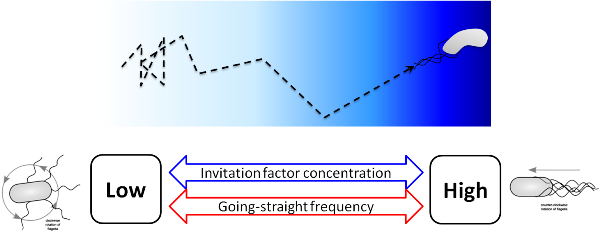Team:Tokyo Metropolitan/Project/Targeting
From 2011.igem.org
| Line 47: | Line 47: | ||
Figure is result of assay. GFP is expressed around of filter paper. This result suggests that K543012 is work appropriately. <br> | Figure is result of assay. GFP is expressed around of filter paper. This result suggests that K543012 is work appropriately. <br> | ||
K543012 is twin with J55000 and I733005, but both of them are only planning, haven’t experienced yet. Our result is the first data of this device is work. <br> | K543012 is twin with J55000 and I733005, but both of them are only planning, haven’t experienced yet. Our result is the first data of this device is work. <br> | ||
| - | </td><td width="200" align="center"><img src="https://static.igem.org/mediawiki/2011/7/71/Tokyo_Metropolitan_Targetingresult.jpg" width=" | + | </td><td width="200" align="center"><img src="https://static.igem.org/mediawiki/2011/7/71/Tokyo_Metropolitan_Targetingresult.jpg" width="179"></td></tr></table> |
</html> | </html> | ||
==Reference== | ==Reference== | ||
[1]Rebecca Hamer,Pao-Yang Chen,Judith P Armitage,Gesine Reinert,Charlotte M Deane 2009 Deciphering chemotaxis pathways using cross | [1]Rebecca Hamer,Pao-Yang Chen,Judith P Armitage,Gesine Reinert,Charlotte M Deane 2009 Deciphering chemotaxis pathways using cross | ||
species comparisons | species comparisons | ||
Revision as of 19:10, 5 October 2011
Targeting Device
Concept
Targeting Device gives new chemotaxis to E.coli. With this device, BeE.coli go for the target bacteria concentrated area. It is constructed to make chassis move in straight line when it receives a kind of chemicals. If the target bacteria produces a specific chemical substance, you can make chassis to swim for target bacteria by putting a appropriate promoter into this device.
Mechanism:Chemotaxis in E.coli
E.coli already have some chemotaxis. Move of E.coli with taxis is right side.
Flagellar motor rotation in...
clockwise: E.coli tumbles.
counter-clockwise: E.coli goes straight.
Rate of clockwise or counter-clockwise rotation is dependent on changes in concentration of invitation factor.With increasing concentration of chemoattractant, flagellr motor tends to rotate in counter-clockwise.As a result, E.coli move for areas where chemoattractant concentrated.
Targeting Device use this move in a different mechanisms.
Phosphorylated CheY is able to diffuse and bind to the flagellar motor, resulting in a change in motor rotation from counter-clockwise to clockwise. This causes a switch from smooth swimming to tumbling, allowing the bacteria to change direction. The motor has a baseline stochastic switching frequency in the absence of any stimulation, but binding of phosphorylated CheY increases this rate. CheY is dephosphorylated by CheZ, which terminates the signal.
(Rebecca Hamer,Pao-Yang Chen,Judith P Armitage,Gesine Reinert,Charlotte M Deane 2009 Deciphering chemotaxis pathways using cross species comparisons)
By controlling cheZ gene expression, we can make new chemotaxis.
Construction
| We use AHL producing bacteria as a model of of the target bacteria, and make a device that produces CheZ dependent on AHL. With This device, E.coli go for AHL concentrated area. |  |
Parts Design
| We designed the part BBa_K543003 HNS mutant T108I protein generator. With this part, chassis would produce HNS mutant T108I protein and get hight speed move. |  BBa_K543010 |
Result
GFP expression is inducible by AHL
| Before check whether Targeting Device(K543010) work, we experienced K543012(using GFP instead of CheZ) works or not. Our method is that inoculating E.coli (induced K543012) onto a plate. Then put filter paper on center of plate and spot 20ul of culture AHL producing E.coli in. After 37℃ incubation, check florescence of GFP. Figure is result of assay. GFP is expressed around of filter paper. This result suggests that K543012 is work appropriately. K543012 is twin with J55000 and I733005, but both of them are only planning, haven’t experienced yet. Our result is the first data of this device is work. |  |
Reference
[1]Rebecca Hamer,Pao-Yang Chen,Judith P Armitage,Gesine Reinert,Charlotte M Deane 2009 Deciphering chemotaxis pathways using cross species comparisons
 "
"











